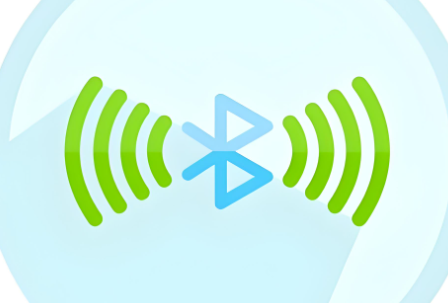With the booming development of Internet of Things technology, Bluetooth tags have become the core tools for warehouse management, asset tracking, personal anti-lost and other scenarios with their advantages of low power consumption, low cost and easy deployment. From electronic price tags for automatic inventory in smart warehouses to locators in pet collars to prevent getting lost, Bluetooth tags are infiltrating every corner of life as "invisible assistants". However, many users still have doubts about whether mobile phones can detect Bluetooth tags: Is this technology mature? What factors affect the detection effect? How to achieve accurate positioning?

Technical feasibility: the underlying logic of mobile phone detection of Bluetooth tags
The core of Bluetooth tags is low-power Bluetooth (BLE) technology, and its working principle is based on the broadcast mechanism of Bluetooth 4.0 and above. Each tag has a built-in unique MAC address and programmable ID, and periodically sends advertising packets (Advertising Packet) at intervals of 20ms-10s, including device type, signal strength (RSSI), custom data and other information. As the receiving end, the mobile phone scans the surrounding broadcast packets through the Bluetooth chip, and can identify the tag identity after parsing the data.
Experimental data support:
The broadcast range of ordinary Bluetooth tags can reach 10-30 meters (depending on the degree of environmental interference). In an open environment, iPhone 15 and Xiaomi 14 can stably detect tags within 15 meters;
The tag power consumption is extremely low: a CR2032 button battery can support 1-3 years of battery life, meeting long-term deployment needs;
Wide compatibility: Android 6.0 and iOS 10 and above systems support BLE scanning, covering 99% of smartphone users.
Detection method: Advanced path from basic scanning to precise positioning
Basic scanning: Quickly identify the existence of tags
Operation steps:
Turn on mobile phone Bluetooth and positioning services (Android 6.0+ requires GPS permissions to be authorized at the same time);
Download dedicated APP (such as "Bluetooth Tag Management" and "iBeacon Finder") or use the system's built-in Bluetooth settings interface;
Scan surrounding devices, and the tag name, MAC address and signal strength (RSSI value) will be displayed in the list.
Typical scenarios:
Warehouse inventory: staff scan shelf labels with mobile phones and complete the verification of 100 items within 30 seconds;
Anti-lost reminder: When the distance between the mobile phone and the bound tag (such as a keychain) exceeds the set range (such as 10 meters), the APP automatically triggers an alarm.
Signal strength positioning: roughly estimate the tag position
The relative distance between the tag and the mobile phone can be estimated through the mathematical model of RSSI value and distance (such as the logarithmic path loss model). For example, when RSSI=-60dBm, the tag is approximately within 1 meter; when RSSI=-80dBm, the distance is about 5 meters.
Application cases:
Mall search: After the user loses the Bluetooth wallet, open the APP to view the signal strength heat map and search in the direction of increasing strength;
Pet tracking: The pet collar tag sends a signal every 5 seconds, and the owner's mobile phone determines whether the pet is close to the door through RSSI changes.
Triangulation positioning: achieving centimeter-level accuracy
In scenarios that require high-precision positioning (such as hospital equipment management and museum exhibit tracking), more than three Bluetooth beacons can be deployed to form a positioning network. By measuring the RSSI value from the tag to each beacon, the coordinates are calculated using the trilateral measurement algorithm.
Technical parameters:
Positioning accuracy: 0.3-1 meter in an open environment, 1-3 meters in a complex environment (such as a multi-partitioned office);
Deployment cost: The price of a single beacon is about 50-200 yuan, covering an area of 50-100 square meters;
From warehouses to homes, from hospitals to museums, the technology of mobile phone detection of Bluetooth tags has broken through the primary stage of "can or can't", and is evolving towards "precise, intelligent, and senseless". For corporate users, choosing the right tag type and positioning solution can significantly improve management efficiency; for individual consumers, mastering basic detection skills can easily solve daily pain points such as anti-lost and find.